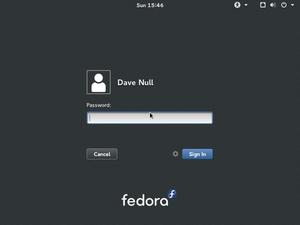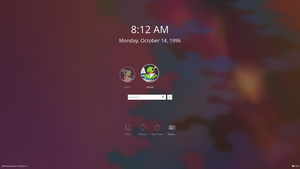More actions
No edit summary |
m (fixed typo) |
||
| Line 1: | Line 1: | ||
[[File:Fedora 21 login screen.png|alt=GDM on Fedora 21|thumb|GNOME Display Manager ( | [[File:Fedora 21 login screen.png|alt=GDM on Fedora 21|thumb|GNOME Display Manager (G'''DM''') being displayed on a fedora workspace]] | ||
[[File:Simple-desktop-display-manager-kde.png|alt=SDDM screenshot|thumb| | [[File:Simple-desktop-display-manager-kde.png|alt=SDDM screenshot|thumb|A screenshot taken of SD'''DM''']] | ||
A Display Manager (DM), also known as a login manager, is typically a graphical user interface that is displayed at the end of the boot process in place of the default shell. It often includes a login screen for entering your credentials and the option to choose which [[desktop environment]] and Display Server to use. While often graphical, a Display Manager can also run within the TTY itself.{{Citation needed}} | A Display Manager (DM), also known as a login manager, is typically a graphical user interface that is displayed at the end of the boot process in place of the default shell. It often includes a login screen for entering your credentials and the option to choose which [[desktop environment]] and Display Server to use. While often graphical, a Display Manager can also run within the TTY itself.{{Citation needed}} | ||
[[Category:Terminology]] | [[Category:Terminology]] | ||
Revision as of 10:06, 8 June 2024


A Display Manager (DM), also known as a login manager, is typically a graphical user interface that is displayed at the end of the boot process in place of the default shell. It often includes a login screen for entering your credentials and the option to choose which desktop environment and Display Server to use. While often graphical, a Display Manager can also run within the TTY itself. [citation needed]
